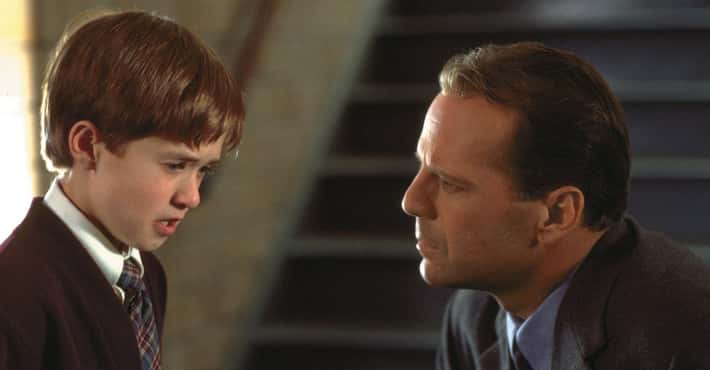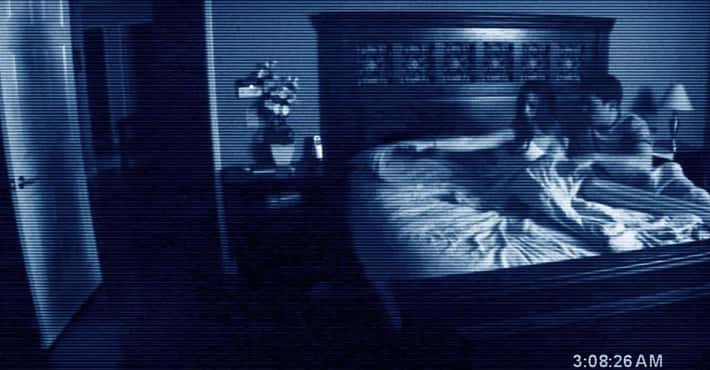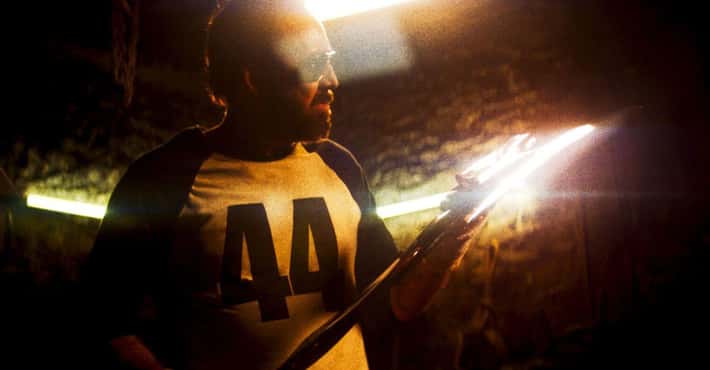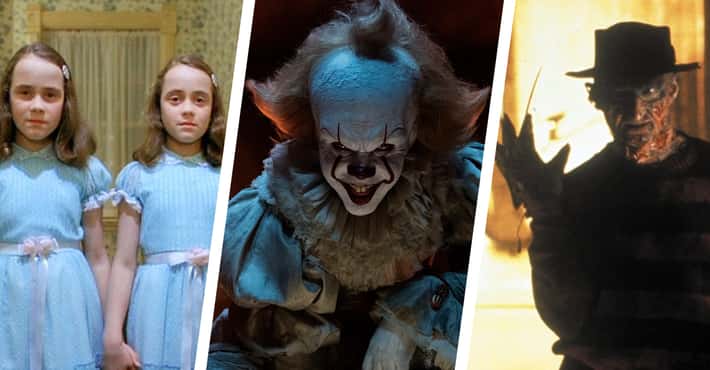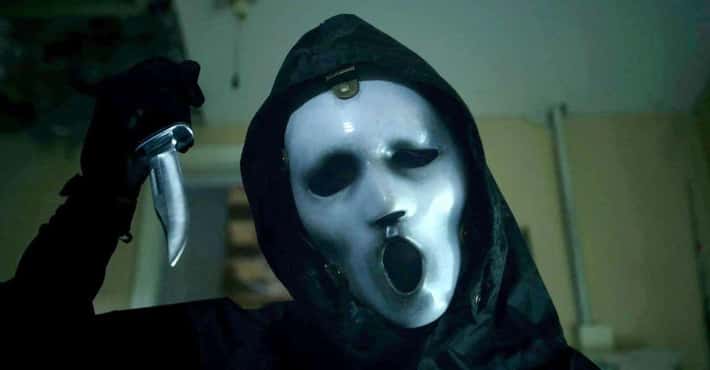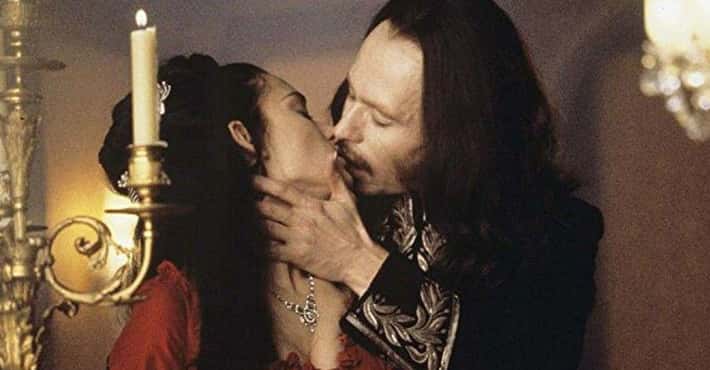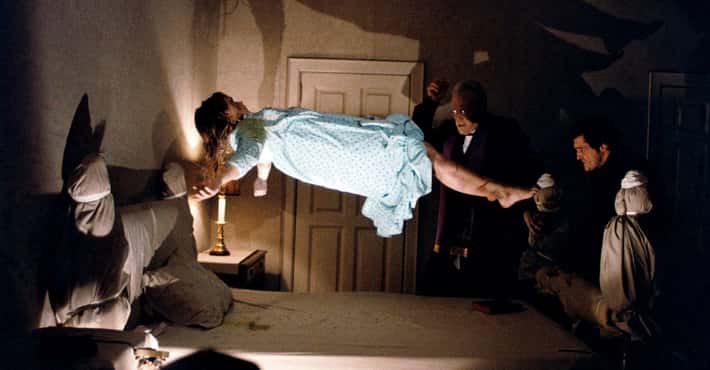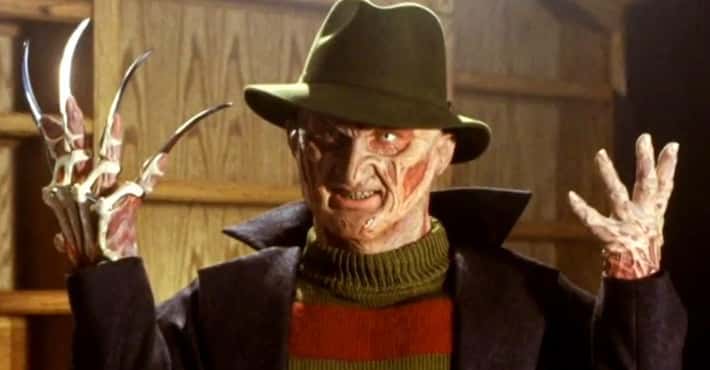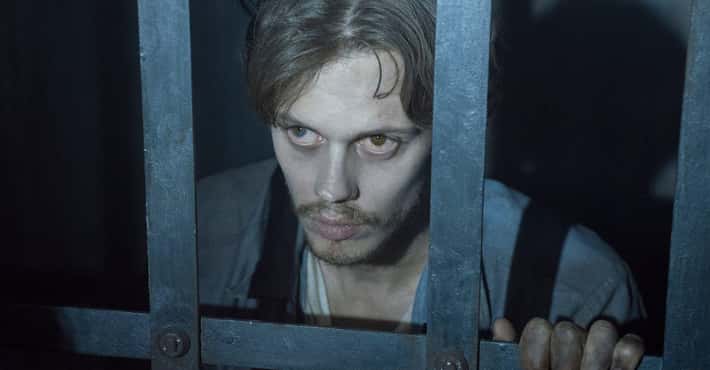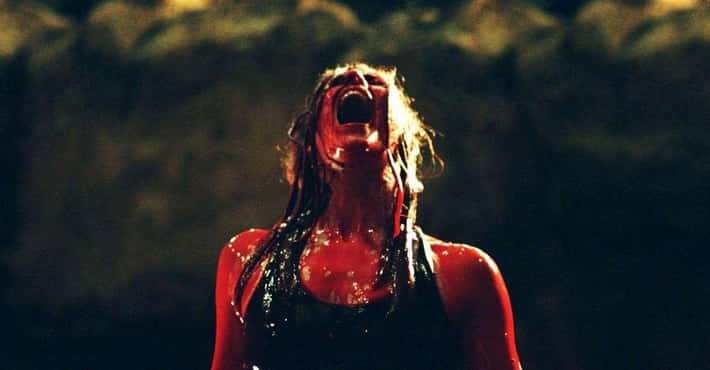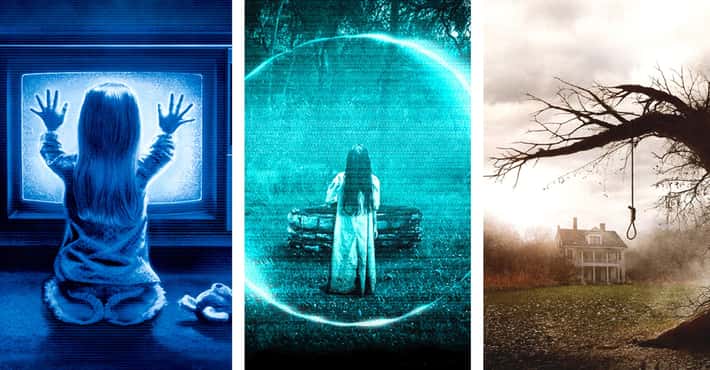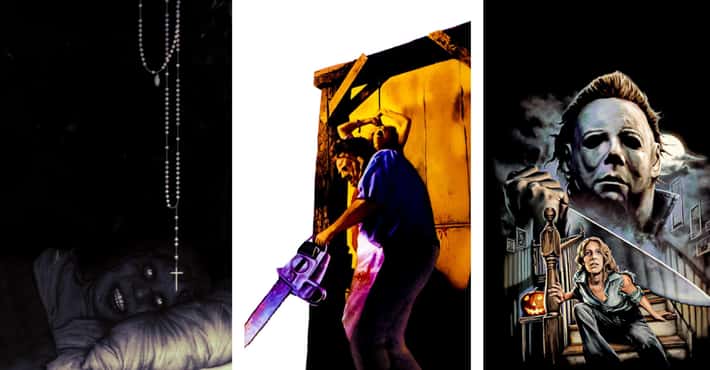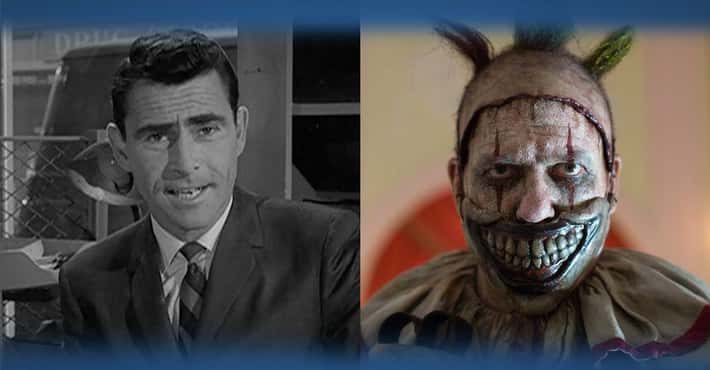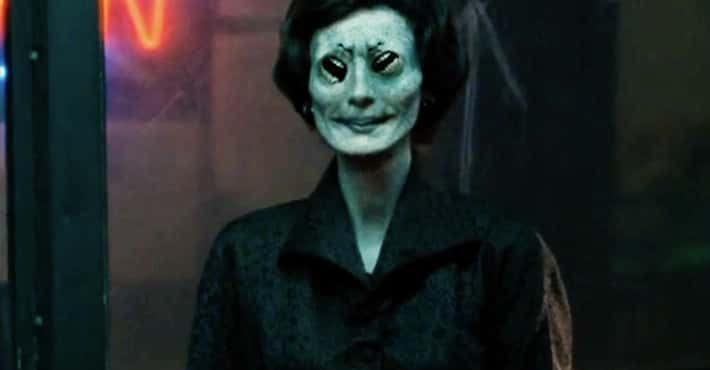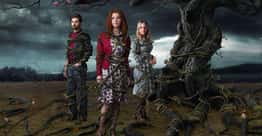
The 15 Scariest 'Twilight Zone' Episodes, Ranked By How Much They Still Ramp Up The Terror
Copy link
When Rod Serling created the Twilight Zone in 1959, he conjured up one of the most celebrated horror shows in history, which has inspired countless other mind-bending shows, like Black Mirror. Even half a century later, though, those shows exist in the shadow of the original Twilight Zone, which still boasts some of the spookiest episodes to ever run on TV.
Part of what makes this classic series so terrifying, even after all these years, is the way that it blends elements of science fiction, social commentary, and Kafkaesque surreality into many of its episodes - not to mention their often-brilliant twist endings. Far from feeling dated, these original Twilight Zone episodes still retain the timeless power to give us nightmares. Whether you're a die-hard fan of the series or discovering it for the first time, vote below on which episodes frighten you most of all.
- 1140 VOTES
The Masks
Photo: CBSWhen The Journey Occurs: Season 5, episode 26
What Happens In This Dimension: It's Mardis Gras and the wealthy Jason Foster learns that he only has a few days left to live. He gathers his closest relatives to him and tells them that they will inherit his entire estate on one condition - they must wear grotesque carnival masks until the witching hour. Unfortunately for them, Mr. Foster isn't fond of his relatives, and the masks have a hidden quality that will leave their wearers quite changed when the clock strikes midnight.
Why The Terror Remains: The big reveal, when the wearers have been transformed into the likenesses of their masks, is the obvious selling point here, but one needn't even get that far to see why the episode is terrifying. As an added bit of interest, “The Masks” was directed by actress Ida Lupino, who had previously appeared in the Season 1 episode “The Sixteen-Millimeter Shrine,” making her not only the only woman to direct an original-series episode of Twilight Zone, but also the only person to both star in one and direct one.
- 2109 VOTES
Night Call
Photo: CBSWhen The Journey Occurs: Season 5, episode 19
What Happens In This Dimension: Confined to either her bed or a wheelchair by an automobile accident years ago, elderly Elva Keene finds herself tormented by mysterious phone calls after a dark and stormy night. At first, the calls are simply silence and static, but gradually they evolve to moans and then a man's voice. She tries to get the phone company to look into it but they assure her that there's no way anyone can be calling her because the line is down - and lying directly on a grave in the cemetery.
Why The Terror Remains: Adapted from a short story by Richard Matheson and directed by the legendary Jacques Tourneur (Cat People, Night of the Demon), “Night Call” does a lot with a very simple premise. Most of the horror comes from the sound of the voice over the phone, as it gradually gains cognition. The ending is different from the original short story - changed from an EC Comics-style twist to a more Twilight Zone-friendly bit of melancholy, though which of the two is actually more haunting is, perhaps, in the eye (or the ear) of the beholder.
- 3123 VOTESPhoto: CBS
When The Journey Occurs: Season 5, episode 6
What Happens In This Dimension: Little Christie loves her Talky Tina doll, with its catch phrase, “My name is Talky Tina and I love you very much.” Her stepfather, however, is not so fond of the doll, especially once it starts replacing its catch phrase with antagonism and threats, though only when no one else is around. Growing obsessed, he tries to destroy the doll, eventually alienating his wife and stepdaughter. However, the doll has the last laugh.
Why The Terror Remains: Look, dolls are just creepy. They've become a horror staple over the years, yet from Child's Play to Annabelle to M3GAN, pretty much every ominous doll in the movies over the last half-century owes something to Talky Tina here. While Tina may look like an ordinary doll, the escalation of her vicious voice is bone chilling, especially when she somehow calls her foe on the phone and threatens his life. It doesn't hurt that “Living Doll,” which which is one of many Twilight Zone episodes parodied on The Simpsons, benefits from a score by the legendary Bernard Herrmann, who composed the music for Psycho.
- 4116 VOTES
The Dummy
Photo: CBSWhen The Journey Occurs: Season 3, episode 33
What Happens In This Dimension: A ventriloquist's act, in which he bickers with his dummy, proves to have uncanny resonances in real life. Jerry Etherson is an accomplished ventriloquist, but he's convinced that his dummy, Willy, is alive and out to get him. Is Jerry succumbing to schizophrenia and alcoholism, as his agent thinks, or is there really something sinister about Willy?
Why The Terror Remains: Borrowing heavily from the ventriloquist segment in the legendary British anthology horror film Dead of Night, this classic Twilight Zone episode contains some unforgettable imagery to drive home to duality of ventriloquist and dummy and keep the audience guessing as to what's what - all up to the episode's creepy “switcheroo” of an ending, with its nightmare fuel image of ventriloquist and dummy having traded places.
- 5130 VOTESPhoto: CBS
When The Journey Occurs: Season 3, episode 8
What Happens In This Dimension: The people of what was once Peaksville, Ohio, live under the most terrifying dictator imaginable - a six-year-old boy with godlike powers. He can read their thoughts, has isolated the town completely from the outside world, and can make or do anything he pleases. He also has the power to banish anyone who upsets him to a place simply referred to as “the cornfield.”
Why The Terror Remains: Anyone who has ever met a young child knows that a six-year-old with absolute power would be an absolute nightmare, and little Anthony Fremont is no exception. There are ample horrifying moments throughout this classic episode, which is one of the most famous in the series, and was reprised in the 1983 film Twilight Zone: The Movie, in a segment directed by Joe Dante. Anthony creates strange creatures, only to slay them with equal ease. He allows the town an hour of television each night, which includes gory dinosaur carnage. But nothing in “It's a Good Life” is more terrifying than the fact that we never learn just where or what “the cornfield” really is.
- 6133 VOTESPhoto: CBS
When The Journey Occurs: Season 1, episode 22
What Happens In This Dimension: On a suburban street in Anytown, USA, the residents see a strange light in the sky. Shortly thereafter, all power goes out, including battery-powered objects and cars. As the neighbors all try to figure out what's going on, the speculation that one or more of them may be alien “scouts” begins to tear them apart. Meanwhile, the true aliens watch from afar as the humans cause their own community to crumble due to baseless suspicion.
Why The Terror Remains: “Prejudices can kill,” Rod Serling says in his closing narration of this classic episode, which TIME magazine named one of the ten best of the series. Ultimately, that's what makes “The Monsters Are Due on Maple Street” such a timeless episode - and such a terrifying one. The monsters aren't the invaders from beyond; they're our own neighbors and friends, who can be pushed, through fear and paranoia, to turn on us. It's a theme that was resonant during the “Red Scare” that was taking place when the episode first aired, and, unfortunately, remains just as resonant today.
- 7105 VOTESPhoto: CBS
When The Journey Occurs: Season 4, episode 13
What Happens In This Dimension: Martin Senescu watches over Ferguson's Wax Museum, where he pays special attention to the rogues who populate “Murderer's Row.” However, with attendance declining, the wax museum is set to close down. Martin doesn't want to lose his charges, so he agrees to keep them in his own basement until a buyer can be found. When his wife, his brother-in-law, and eventually his old boss all begin to interfere, they find themselves at the mercy of the murderers, who are more lively than one would expect wax figures to be.
Why The Terror Remains: Directed by horror legend John Brahm, who was no stranger to shadowy slayers, having helmed the Jack the Ripper picture The Lodger in 1944, this spooky offering stars Martin Balsam (Psycho) as the caretaker who becomes a bit too invested in his wax charges. “The New Exhibit” has a pretty high body count for a Twilight Zone episode, but what makes this one really chilling are the scenes where the wax figures begin to stir to life and stalk their prey - and the reveal at the end that maybe it wasn't them doing the slaying at all.
- 8113 VOTESPhoto: CBS
When The Journey Occurs: Season 5, episode 3
What Happens In This Dimension: William Shatner plays a man who sees a gremlin on the wing of his plane in one of the series' most famous and oft-cited episodes. On his return trip home from a sanitarium after suffering a nervous breakdown, he is the only passenger who can see a gremlin on the wing outside - one that seems determined to bring the plane down. He attempts to alert the other passengers and crew, but they assume he is losing his mind and ignore the danger completely.
Why The Terror Remains: “Nightmare at 20,000 Feet” is a classic episode for a lot of reasons, including an impressive pedigree. Besides Shatner in front of the camera, the episode is one of several adapted from an equally classic short story by Richard Matheson, author of Hell House and I Am Legend, and it's also the first of six episodes directed by Richard Donner (also known for The Omen, The Goonies, Lethal Weapon). With a point-of-view character whose perception is unreliable, “Nightmare at 20,000 Feet” acts as effective shorthand for any number of fears, but let's face it, what really keeps us terrified after all this time is that glimpse of the gremlin in the plane window.
- 992 VOTESPhoto: CBS
When The Journey Occurs: Season 1, episode 21
What Happens In This Dimension: Millicent Barnes is waiting for a bus to take her to her new job. She grows wary when she notices someone else is waiting for the same bus - someone who looks, sounds, and acts exactly like her. What does this seemingly malevolent doppelgänger want, and is Millicent the only one who has such a double waiting for her?
Why The Terror Remains: Jordan Peele has cited this classic Twilight Zone episode as one of the inspirations for his 2019 film Us, which is a strong commendation of its terror credentials all on its own. If that's not enough, the smirking image of the doppelgängers in this episode is one that you won't soon forget. And who among us hasn't felt like an imposter in our own lives, after all? There's nothing spookier than the idea of a better, more successful version of you coming to take your place.
- 1093 VOTES
Little Girl Lost
Photo: CBSWhen The Journey Occurs: Season 3, episode 26
What Happens In This Dimension: Chris and Ruth Miller can hear their daughter Tina, but they can no longer see her. It seems that Tina has rolled under her bed and into another dimension. The family dog soon follows, but any attempt to get Tina back risks her rescuer becoming just as lost. As the family calls over a physicist friend who can explain the phenomenon but not reverse it, their situation becomes increasingly desperate as it seems that the portal may be beginning to close.
Why The Terror Remains: One of several Twilight Zone episodes later parodied on The Simpsons, “Little Girl Lost” was adapted from a story by Richard Matheson, which was inspired by a personal experience. According to the Twilight Zone Companion by Marc Zicree, Matheson based the story on a real incident when his daughter fell out of bed and rolled under it, all the way to the wall. Though he and his wife could hear her crying, they couldn't initially find her, which gave him the idea for his story. And that terror, both for child and parent, is what makes “Little Girl Lost” so enduringly scary.
- 11100 VOTESPhoto: CBS
When The Journey Occurs: Season 1, episode 34
What Happens In This Dimension: A woman's attempt to buy a simple present at a department store turns into a nightmare when she finds herself on the store's nonexistent ninth floor. Becoming locked in for the night, she discovers that the store's mannequins are alive - and that she might be one of them.
Why The Terror Remains: The “uncanny valley” is a term coined to describe our discomfort with figures that appear human but remain just slightly off. Few figures that we encounter in our day-to-day lives encompass this feeling better than mannequins, which also carry a disquieting connection to our own consumerism. Of course, in the Twilight Zone, such an “uncanny valley” may become deeper and more ominous than it might in real life, as is the case in this episode starring the legendary Anne Francis (Forbidden Planet).
- 1296 VOTESPhoto: CBS
When The Journey Occurs: Season 2, episode 15
What Happens In This Dimension: The legendary Agnes Moorehead plays an unnamed woman who lives alone in a simple farmhouse. When a tiny flying saucer lands on her roof, she finds herself menaced by the pint-sized “invaders” of the title, who look like robots or figures in pressure suits. Once she has finally slain one and damaged the ship, it is revealed that the “invaders” are actually humans from Earth, and the woman is the giant inhabitant of some alien world.
Why The Terror Remains: An episode almost entirely without dialogue, centered around a one-woman performance in which Moorehead primarily only interacts with puppets, “The Invaders” is a study in isolation and terror. Moorehead's portrayal of a woman tormented is conveyed almost entirely through body language and facial expression, the only sounds she makes occasional gasps of pain. The terror of being alone against even such diminutive enemies is only ramped up by the episode's final reveal, which is emblematic of the type of twists that Twilight Zone was famous for.
- 1380 VOTESPhoto: CBS
When The Journey Occurs: Season 1, episode 11
What Happens In This Dimension: Experimental spaceplane X-20 has recently returned from a 31-hour flight into space, carrying three astronauts. Or was it two? Or maybe only one? When the X-20 crash-lands in the Mojave Desert, one of the surviving astronauts approaches another to see if he can remember the third person who accompanied them on the excursion, because it seems that no one else can. When it turns out that he can't, either, panic sets in… until the second astronaut also vanishes, followed by the first, and even the plane that carried them into space.
Why The Terror Remains: For many of us, more terrifying than death is being forgotten. Ceasing to exist - or to have ever existed. That's what this episode, adapted from a short story by Richard Matheson, exploits so well. But perhaps even more terrifying than vanishing from memory is being the one person left who does remember, as is the case (at least for a while) with the tormented astronaut at the center of this classic episode.
- 1491 VOTESPhoto: CBS
When The Journey Occurs: Season 1, episode 29
What Happens In This Dimension: A teacher named Helen Foley sees a strange little girl on the stairs outside her apartment. The girl seems somehow familiar and seems to know Helen, but suddenly runs away when another stranger approaches. This stranger claims that he knew Helen when she was a child, and that he was the first to find her mother's murdered body, an even when Helen largely can't remember. Between the child and the man, however, something sinister is going on…
Why The Terror Remains: What is more terrifying than the unknown is perhaps something that we know but cannot quite remember. Is Helen in danger from the man, or from the little girl? And what relationship do both of them have to her past and her mother's demise? If she can just remember, she will probably be safe, but the memory stays just out of reach and, as it does, the terror ramps up for Helen and for the viewer in this classic Twilight Zone episode.
- 1560 VOTESPhoto: CBS
When The Journey Occurs: Season 5, episode 15
What Happens In This Dimension: Oliver Pope is a mild-mannered but anxious executive whose life takes a turn for the worse when he runs over a paperboy. “But Mr. Pope hasn't time for the victim,” as Serling says in his opening narration, “his only concern is for himself. Oliver Pope, hit-and-run driver, just arrived at a crossroad in his life, and he's chosen the wrong turn.” Though it initially seems like he's going to get away with his crime, his car, which seems to develop a conscience of its own, has other plans.
Why The Terror Remains: Automobiles with minds of their own are nothing new to the annals of horror - and they weren't even in 1964, when this episode first aired. In fact, this same story had already been used in an episode of Justice a decade earlier. What makes “You Drive” stand out is the steady yet inexorable build up as the car's acting out increases in frequency and specificity, preying on Mr. Pope's guilt. That ratcheting tension can be chalked up to the work of director John Brahm, who helmed some classic horror movies in the 1940s.

















